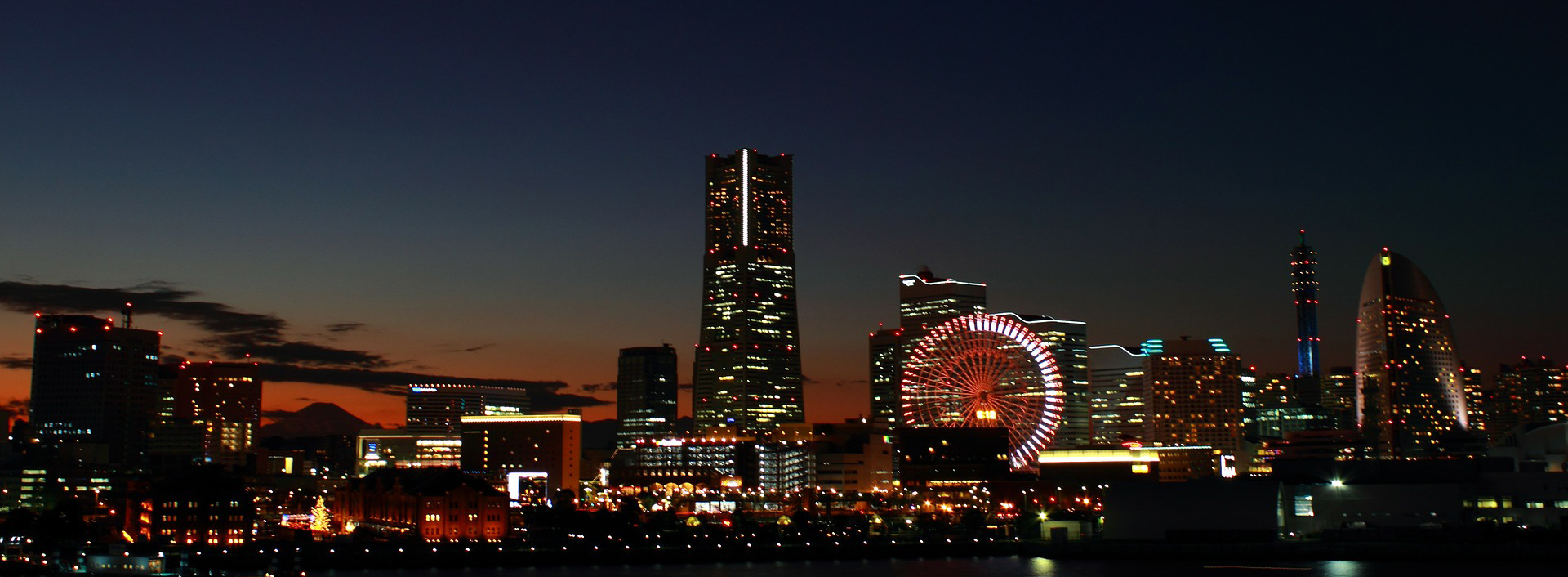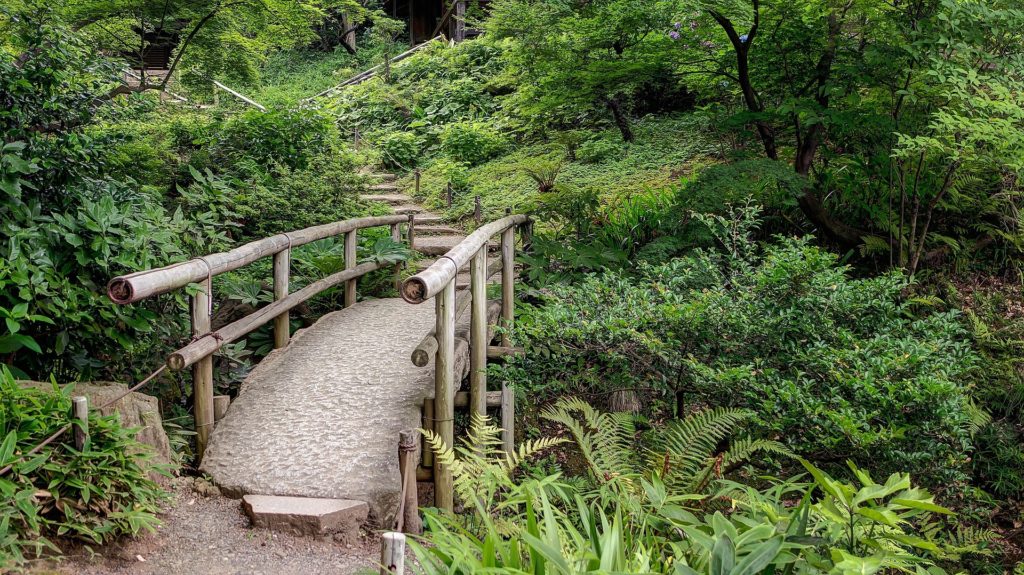
Only about a 30-minute train ride away from Tokyo, the city of Yokohama is a large, expat-friendly city that serves as Kanagawa Prefecture’s capital.
How To Get There
There are several train lines that connect Tokyo and Yokohama.
The JR Tokaido Line provides the fastest option, and can get you from Tokyo Station to Yokohama Station in about 25 minutes. The JR Yokosuka Line and the JR Keihin-Tohoku Line also offer the same connection, albeit at a slower pace.
If coming from Shibuya Station, you may take the Tokyu Toyoko Line or the JR Shonan Shinjuku Line.
From Shinjuku Station, Yokohama Station is around half an hour away via the JR Shonan Shinjuku Line.
And, from Shinagawa Station, a ride to Yokohama Station via the Keikyu Keihinkyuko Line, the JR Tokaido Line, the JR Yokosuka Line, or the JR Keihin-Tohoku Line takes under 30 minutes.
Top Attractions
Minato Mirai 21
A highly-urban district right by the sea, Minato Mirai 21 is packed with skyscrapers, luxury hotels, department stores and malls, and other entertainment facilities. Its most prominent landmark is the Landmark Tower, which stands 296 meters tall and houses the Sky Garden Observatory.
A small amusement park, called Cosmo World, is nearby, and it offers a good selection of rides and attractions, including a huge Ferris wheel that looks amazing when illuminated at night. There is also a spa centre, called Manyo Club, where visitors can dip in hot spring waters, get a massage, and enjoy other relaxing services.
For the shopaholics, Queen’s Square, World Porters, Landmark Plaza, Marine & Walk Yokohama, and Red Brick Warehouses have numerous boutiques and shops that sell a wide variety of both local and international brands.
Chinatown
Yokohama is home to the largest Chinatown in Japan. Located in the heart of the city, and bounded by large, colourful gates at its entrances, it is known for its food stalls, eateries, and restaurants that serve different kinds of Chinese foods, such as steamed buns and ramen. It also has a temple, the Kanteibyo, standing at the centre.
Every year, for the Chinese New Year celebration, the district is decorated with lines and lines of bright streamers and lanterns, and holds traditional song and dance performances and a traditional costumes parade.
Cup Noodles Museum
Want to try how to make your own ramen? The Cup Noodles Museum is an interactive museum founded by the Nissin Food Company that offers visitors the opportunity to not only learn about the history of instant cup noodle, but to also let them whip up their own recipe by picking their personal choice of toppings, seasonings, and flavours.
More information on ticket prices, opening hours, and access are available on the Cup Noodles Museum official website.
Shin-Yokohama Ramen Museum
For more ramen experience, the Shin-Yokohama Ramen Museum is both a museum that features exhibits of different ramen varieties found across Japan, and a food court that houses nine ramen restaurants that serve some of the best ramen dishes that originate from the different regions of the country.
Their menu and other information are available on the Ramen Museum’s official website.
Sankeien Garden
Growing a wide variety of flowers and trees, with small rivers and a pond, the Sankeien Garden is a beautiful Japanese-style garden in central Yokohama. It has walking trails that take you to the different areas of the garden, and a number of old structures, including a historic feudal lord residence, a three-storied pagoda, Tomyoji Temple’s main hall, and many tea houses.
Opened to the public in 1906, Sankeien Garden is open every day, except on December 29, 30, and 31.

You can find more information on Sankeien Garden’s official website.
Yamashita Park
Sitting on a 750-metre long stretch along the waterfront, Yamashita Park is a large and spacious green space where you can enjoy scenic views of the sea, take a pleasant stroll, or just sit and relax. Docked nearby is the Hikawa Maru, which is a huge ocean liner that ran between Yokohama and Vancouver and Seattle for 30 years, from 1930 to 1960, and is now a museum. The 106-meter tall Yokohama Marine Tower is also in the vicinity, and it offers a panoramic view of the city from its observatory.
Kirin Beer Factory
Kirin is one of the four biggest Japanese beer brands, and its Kirin Beer Factory tour is a must for any beer enthusiast visiting Japan. The 80-minute brewery tour includes a peek at the history of beer in the country and the founding of Kirin; the areas where the fermentation, canning, and bottling processes are done; and a beer tasting that comes with some light snacks. Tours are conducted every hour starting at 10 am to 4 pm daily, except Mondays. Reserving a spot in advance is highly recommended, as slots may be limited.
The Kirin Beer Factory official website has more information on reservations, access, and prices.
Getting Around
There are two major railway stations in Yokohama — Yokohama Station and Shin-Yokohama Station, and many of the top attractions are within walking distance from these two. But, if walking is not for you, the city also has two subway lines and a loop bus service that also provide easy access to the majority of the popular tourist sites.
As always, getting a prepaid IC card — a PASMO, Suica, or any of the other eight major IC cards — is encouraged for a fast and convenient travel around Yokohama.
Also, look into purchasing the Minato Burari Ticket or the Yokohama Bay Area One-Day Ticket for unlimited rides on the city’s subway lines and buses in a day for only 500 yen. You can find more information on it on Yokohama’s Transportation Bureau’s official website.
Weather
Yokohama gets very hot and humid summer days. From late June to early October, daily temperatures are in the high 20s Celsius and can sometimes rise to the mid-30s. The months of September and October see the most rainfall due to the typhoon season. Once autumn kicks in, the days become cooler, with daily temperatures usually at 15 degrees Celsius. During the winter months, temperatures drop to around 5 to 10 degrees Celsius, and the days are generally sunny and dry. In spring, weather is more pleasant, with temperatures at around 15 degrees and only a few rainy days.
